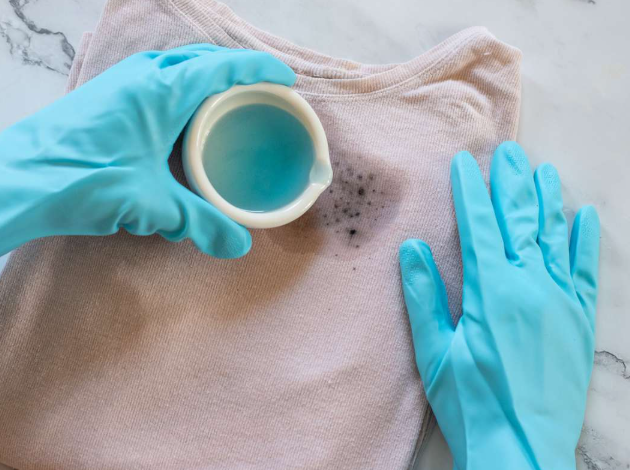
6 Essential Tips for Removing Tough Stains from Your Clothing
Dealing with stubborn stains on your clothes can feel like a nightmare. Whether it’s a fresh red wine spill on your favorite white shirt or grease marks from a kitchen mishap, knowing how to handle these stains is key to keeping your wardrobe in pristine condition. There’s no need to give up on your garments just yet—effective stain removal techniques can help restore even the most damaged fabrics. Let’s dive into some proven methods for tackling different types of stains, from oil and pigment to protein-based marks.
How Stains Affect Fabrics
Understanding how stains cling to fabrics is crucial in choosing the right treatment. Various substances can damage your clothing, and each type of stain requires a tailored approach for removal. Oil-based stains come from cooking oils, makeup, or even butter, while pigment stains arise from things like wine, berries, or coffee. Protein stains, often caused by bodily fluids or food like eggs and dairy, can be the trickiest. Additionally, some stains can damage the fabric’s structure by weakening fibers, so fast action is important.
Stains usually bond with fabric fibers, especially if they’re left untreated. This chemical bonding makes stains much harder to remove as time passes. The best approach is to act quickly, but even set-in stains can often be salvaged with the right methods.
Always Check the Clothing Labels
The first step in any stain removal process is to check the garment’s care label. Knowing the fabric type and cleaning instructions will help you avoid using harsh methods that could damage delicate fabrics. For example, materials like silk and wool require special handling. If there’s no label, always test your stain remover on a hidden spot to ensure it doesn’t damage the fabric.
Also, pay attention to washing symbols and temperature guidelines to avoid making the stain worse. For particularly delicate items, like those labeled “Dry Clean Only,” it’s best to seek professional help to ensure they aren’t ruined.
Tackling Oil-Based Stains
Oil-based stains are among the toughest to remove, whether they come from food, cosmetics, or automotive products. To effectively treat these stains, it’s crucial to act quickly before the oils are absorbed deeper into the fabric.
- Dish Soap and Baking Soda: Mix a teaspoon of dish soap with enough baking soda to form a paste. Gently apply the paste to the stain, letting it sit for a few minutes. Then, rinse with cold water. This method works well for most durable fabrics and can even fade any discoloration when air-dried in the sun.
- Dry Cleaning Solvent: For heavy-duty stains, dry cleaning solvents can break down oil quickly. Apply the solvent to the stain, placing paper towels underneath to absorb the excess oils. Repeat this process until the stain is gone.
- Activated Charcoal: A more natural approach is using activated charcoal to absorb oil. Place the stained clothing in a sealed bag with a few pieces of charcoal and let it sit for a few hours. Afterward, rinse off the charcoal and wash the garment as usual.
Removing Pigment Stains
Pigment stains, such as those from berries, coffee, or sauces, can be especially tricky to tackle due to their rich, intense dyes. Quick action is key when addressing these stains.
- Vinegar or Lemon Juice: Saturate the stained area with vinegar or lemon juice. These acids help break down the pigment’s molecules, making it easier to lift the stain. Let it sit for 5-10 minutes before rinsing with cold water. For added effectiveness, sprinkle baking soda on top before rinsing to help scrub away the remaining stain.
- Hydrogen Peroxide and Dish Soap: A mixture of hydrogen peroxide and dish soap can be very effective for light-colored fabrics. Apply the mixture to the stain and let it sit for 10-15 minutes before rinsing with cold water. Always test this method on a small, hidden area first, as hydrogen peroxide can sometimes bleach fabrics.
- Enzyme-Based Removers: Enzymatic stain removers are great for breaking down the organic matter in pigment stains. Apply directly to the stain and let it sit for 15-30 minutes, then blot and rinse with cold water.
- Salt and Cold Water: For stains like red wine, apply salt immediately after the spill to absorb the excess liquid. After a few minutes, rinse the fabric with cold water. For more stubborn stains, soak the item in cold water with salt for up to 30 minutes before washing.
Eliminating Protein Stains
Protein-based stains, such as blood, eggs, or sweat, require enzymatic cleaning agents to break down the proteins in the stain. Here’s how to deal with these stains:
- Cold Water Rinse: Always use cold water to rinse protein stains, as hot water can cause the proteins to set. After rinsing, soak the fabric in cold water mixed with an enzymatic detergent. Let the garment soak for several hours before washing as usual.
- Egg and Dairy Stains: Soak stains from egg or dairy in cold water with an enzymatic detergent. Adding a small amount of vinegar can help dissolve compounds like calcium. Rinse thoroughly before washing.
For tougher stains, especially those involving leather or other delicate materials, consider using specialized products that won’t compromise the fabric’s integrity.
Preventing Future Stains
While stains are sometimes unavoidable, you can take proactive steps to protect your clothes from future mishaps:
- Stain Guard Sprays: Applying a stain-resistant spray to your clothes, such as Scotchgard, can create a protective layer against spills and stains. These sprays work by causing liquids to bead up, preventing them from soaking into the fabric.
- Protective Layers: During messy meals, consider using a bib or napkin to shield your clothing from sauces or grease. For particularly stain-prone meals, such as BBQ, opt for darker or more resilient fabrics.
- Storing Food Separately: When packing lunches or heading out for a picnic, keep food away from your clothing to prevent accidental spills. A stain stick like Tide to Go is also handy for quick cleanups.
Storing Clothes to Protect Them
To keep your stored clothes in top condition, consider using cedar wood products like muslin sachets filled with cedar chips. Cedar’s natural oils repel insects and mildew, while its scent helps keep clothes fresh. Use cedar sachets in closets, drawers, or storage bins to protect delicate fabrics like sweaters and scarves.
With these simple steps and effective stain removal techniques, you can ensure your clothing stays in great condition, no matter what spills or accidents come your way.






